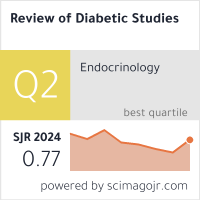Patient Safety And Risk Management: Shared Responsibilities Between Nursing And Respiratory Therapists In The Care Of Patients Connected To A Mechanical Ventilator
DOI:
https://doi.org/10.70082/a7qn9985Keywords:
patient safety, mechanical ventilation, respiratory therapist, nursing, interprofessional collaboration, risk management.Abstract
Background: Mechanical ventilation is a lifesaving intervention for critically ill patients but carries significant risks of adverse events, including ventilator-associated pneumonia and patient–ventilator asynchrony. Nurses and respiratory therapists (RTs) share essential responsibilities in ensuring patient safety, yet collaboration can be hindered by overlapping roles, communication barriers, and system inefficiencies. Understanding their joint contributions is crucial to improving safety and outcomes for ventilated patients.
Methods: A descriptive integrative literature review was conducted using PubMed, Scopus, CINAHL, ScienceDirect, and Google Scholar databases. Studies published between 2015 and 2025 focusing on adult ICU populations and nurse–RT collaboration in mechanical ventilation were included. Thematic synthesis was employed to analyze interprofessional practices, safety strategies, and risk management outcomes.
Results: Findings revealed that strong nurse–RT collaboration enhances adherence to evidence-based ventilation protocols, reduces ventilator-associated complications, and improves patient outcomes such as shortened ICU stay and decreased mortality. Shared decision-making, structured communication models (e.g., SBAR), and joint education programs emerged as key enablers of safety culture. Conversely, barriers included role ambiguity, hierarchical dynamics, inadequate staffing, and limited institutional support. Effective collaboration was also linked to higher staff satisfaction and reduced burnout.
Conclusions: Patient safety in mechanical ventilation depends on the integrated efforts of nurses and respiratory therapists working in partnership. Collaborative frameworks, mutual respect, and continuous interprofessional education are vital to optimizing care and mitigating risk. Institutional investment in structured teamwork models, competency validation, and supportive safety cultures will sustain improved outcomes and elevate the standard of critical care practice.
Downloads
Published
Issue
Section
License

This work is licensed under a Creative Commons Attribution-ShareAlike 4.0 International License.


